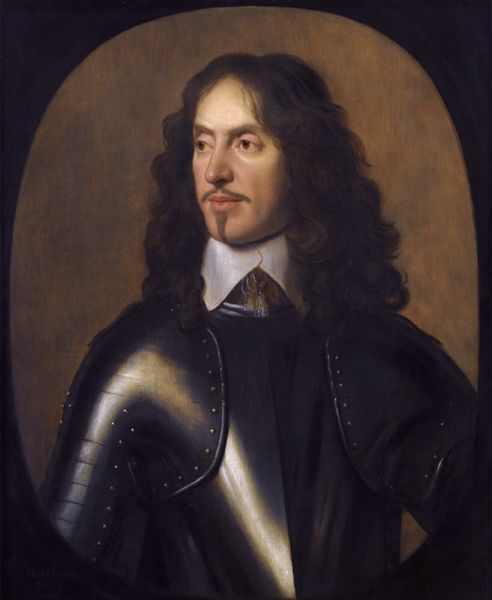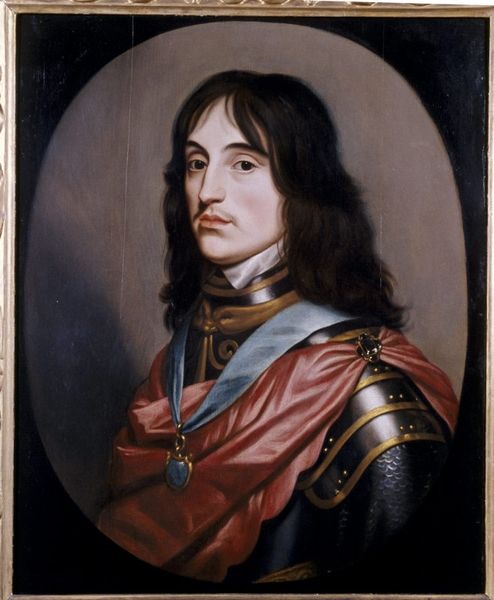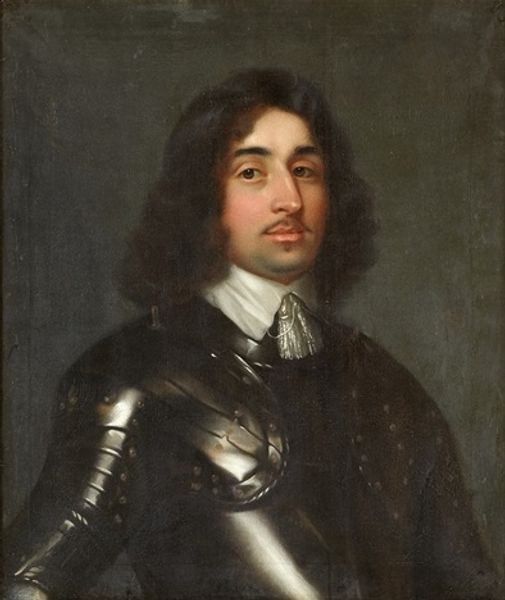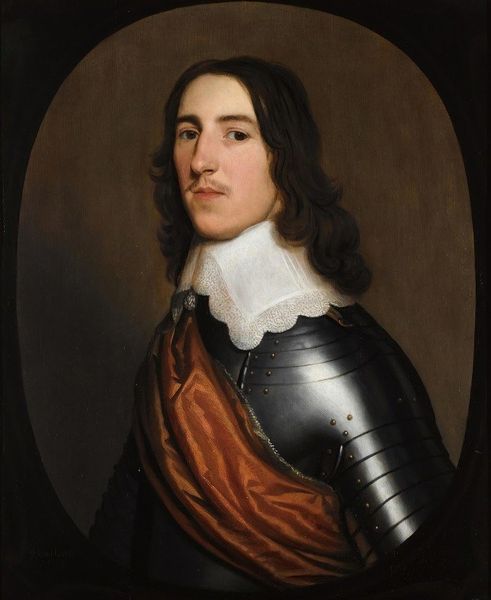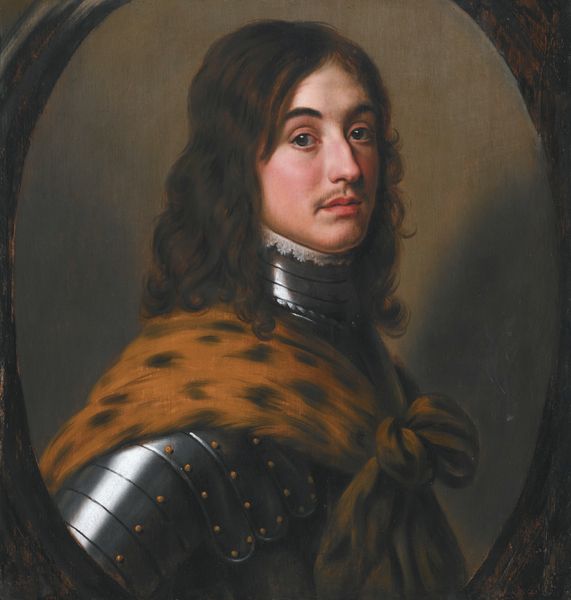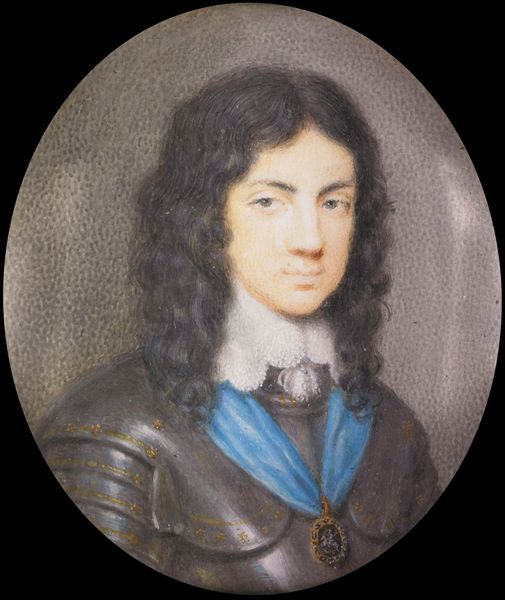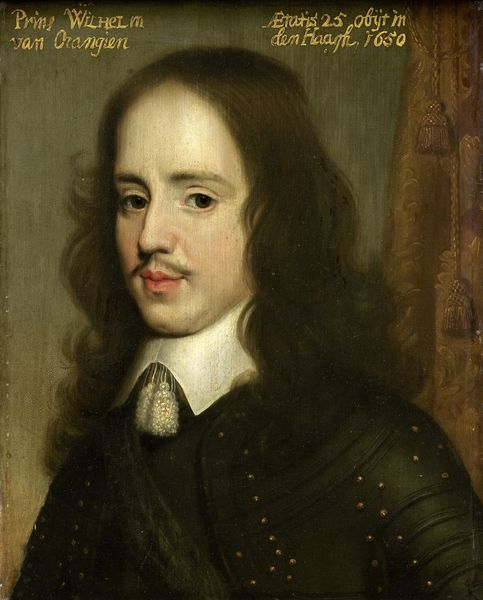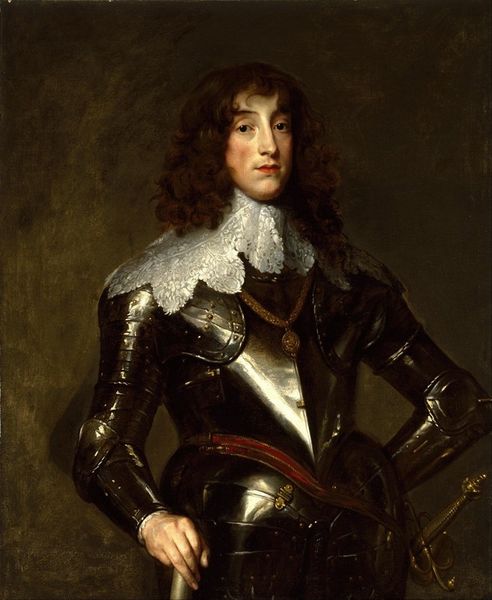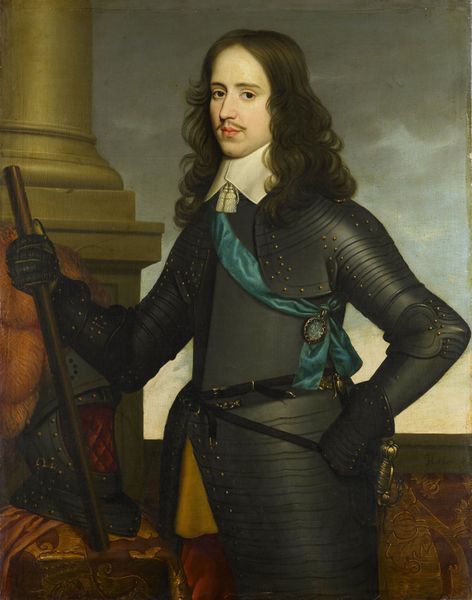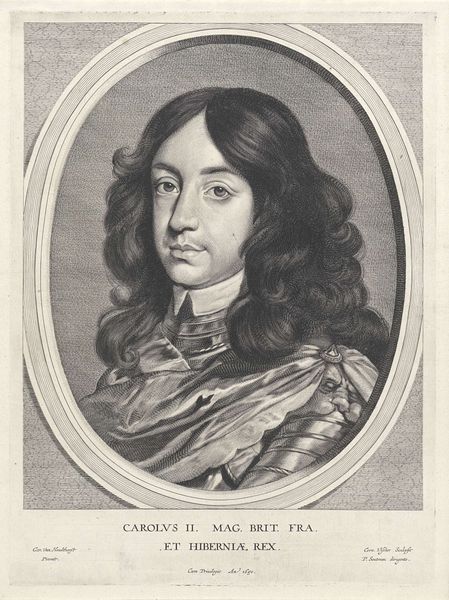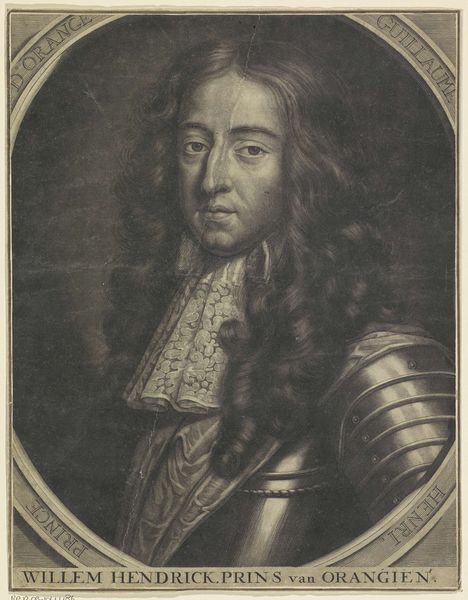
oil-paint
#
portrait
#
baroque
#
portrait image
#
portrait
#
oil-paint
#
portrait subject
#
portrait reference
#
portrait head and shoulder
#
nose
#
history-painting
#
facial portrait
#
portrait art
#
fine art portrait
#
celebrity portrait
#
digital portrait
Copyright: Public domain
Curator: Here we have what's known as "Portrait of Charles II of England," rendered in oil paint, by Gerard van Honthorst. Editor: My initial thought is... power, but softened. The baroque styling romanticizes the figure, almost to an ethereal extent. I’m struck by the texture too - the visible brushstrokes on the face, the slick armour – very intentional choices in revealing labor and technique. Curator: Absolutely. Honthorst was renowned for his skillful use of light and shadow, wasn’t he? It's intriguing how he balances this almost theatrical grandeur with a stark, unflinching depiction of Charles. I see this piece in the context of the English monarchy and the intense cultural shifts taking place during the 17th Century. Editor: And in the production itself, note the stark contrast between the rough handling of pigment in his hair and the smoothing techniques used for the face and crispness of his collar. Are we meant to be aware of him as human first, and royal second? I can't help but consider the material conditions behind creating art in service of empire, you know, labor, social hierarchy, and access. Curator: That’s right, by emphasizing Charles's individual features against a fairly neutral background, Honthorst could also be making a statement about the changing role of monarchy and the emerging power of the individual. The work itself probably reinforced the King’s power and legitimised him through a combination of realism and elevated materials that visually broadcast access, money and skill. Editor: Right! And even his armour and drapery become symbols. The highly rendered but industrial armor suggests his readiness for military engagement, but also makes him an opulent consumer item to be paraded about the royal courts, if we read armour in that light... Curator: Interesting! It reminds me how this artwork, while being a window to the past, can spark so much dialogue. The play of light, the detailed craftsmanship, and historical context give it that staying power, for sure. Editor: Definitely! From the material reality of its creation, to the image and meaning the patron, the King, meant to construct, it reveals to me how historical events often shape art, and art simultaneously shapes history and collective memory. I love to wonder how the artwork participates and even intervenes in a discourse beyond art itself!
Comments
No comments
Be the first to comment and join the conversation on the ultimate creative platform.
